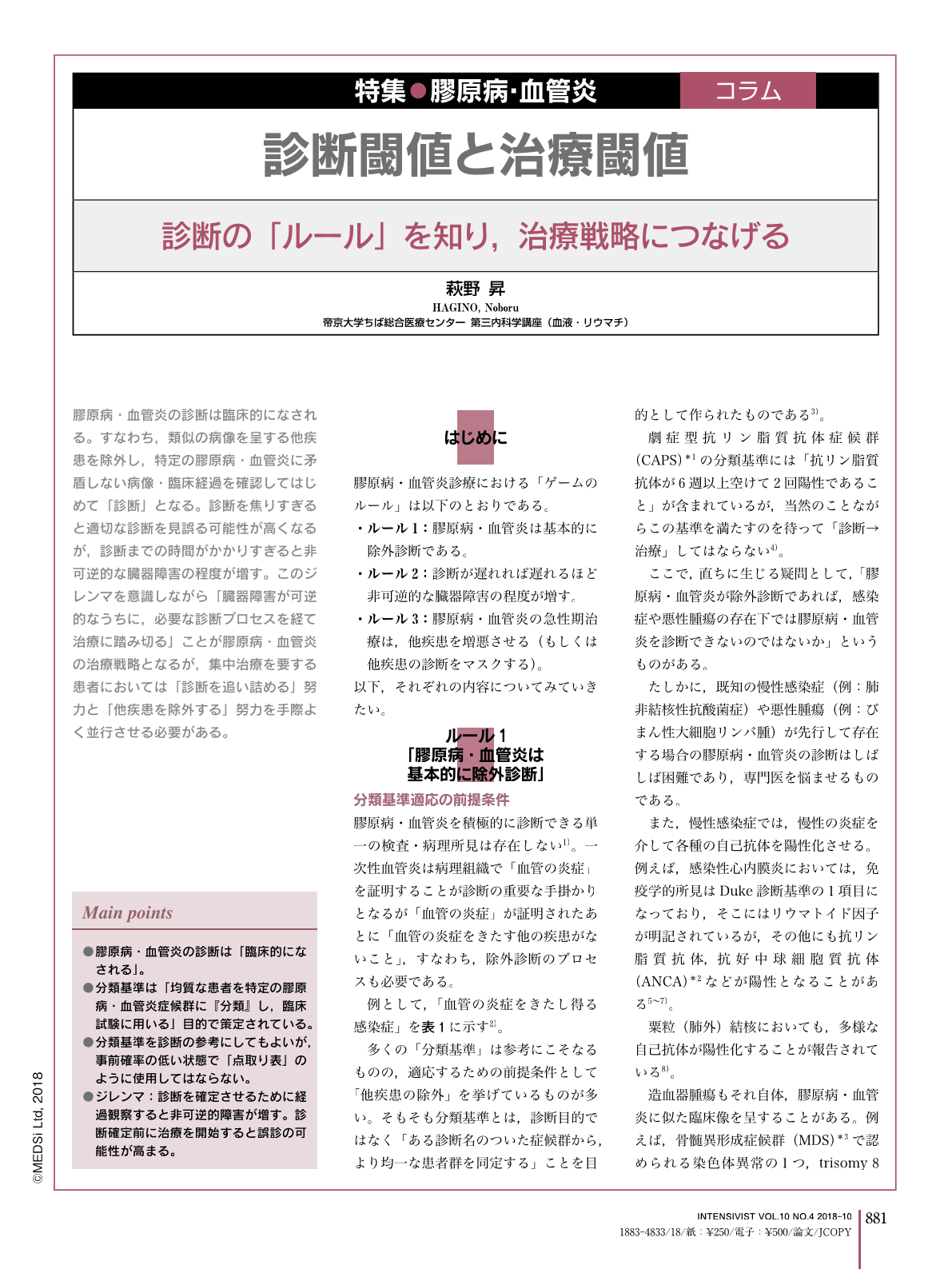Japanese
English
- 有料閲覧
- Abstract 文献概要
- 1ページ目 Look Inside
- 参考文献 Reference
膠原病・血管炎の診断は臨床的になされる。すなわち,類似の病像を呈する他疾患を除外し,特定の膠原病・血管炎に矛盾しない病像・臨床経過を確認してはじめて「診断」となる。診断を焦りすぎると適切な診断を見誤る可能性が高くなるが,診断までの時間がかかりすぎると非可逆的な臓器障害の程度が増す。このジレンマを意識しながら「臓器障害が可逆的なうちに,必要な診断プロセスを経て治療に踏み切る」ことが膠原病・血管炎の治療戦略となるが,集中治療を要する患者においては「診断を追い詰める」努力と「他疾患を除外する」努力を手際よく並行させる必要がある。
Main points
●膠原病・血管炎の診断は「臨床的になされる」。
●分類基準は「均質な患者を特定の膠原病・血管炎症候群に『分類』し,臨床試験に用いる」目的で策定されている。
●分類基準を診断の参考にしてもよいが,事前確率の低い状態で「点取り表」のように使用してはならない。
●ジレンマ:診断を確定させるために経過観察すると非可逆的障害が増す。診断確定前に治療を開始すると誤診の可能性が高まる。
The diagnosis of rheumatic diseases should be made clinically, not solely using classification criteria. The majority of classification criteria in rheumatic diseases are not intended to establish a diagnosis but are for selecting a homogenous patient population for enrollment in clinical trials. A certain range should be considered when diagnosing patients with rheumatic diseases who present with unexplained fever and multiple organ dysfunction, since no single set of laboratory tests or pathologic studies can effectively rule in or rule out rheumatic diseases. Unnecessarily early intervention may lead to misdiagnosis, while prolonged observation may lead to irreversible organ damage. In this article, we focus on the rationale behind, and common pitfalls in the diagnostic approach to rheumatologic diseases.

Copyright © 2018, MEDICAL SCIENCES INTERNATIONAL, LTD. All rights reserved.


